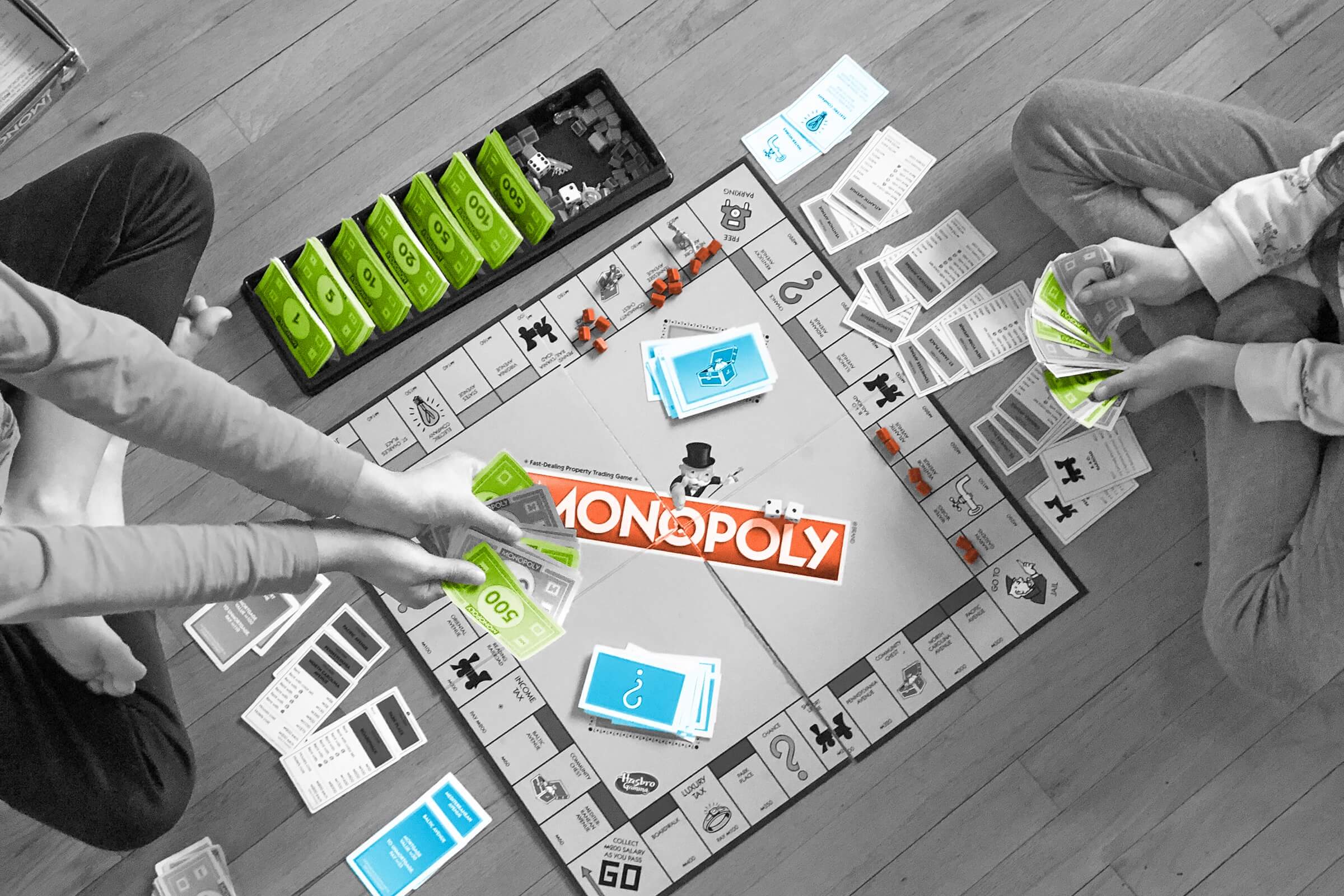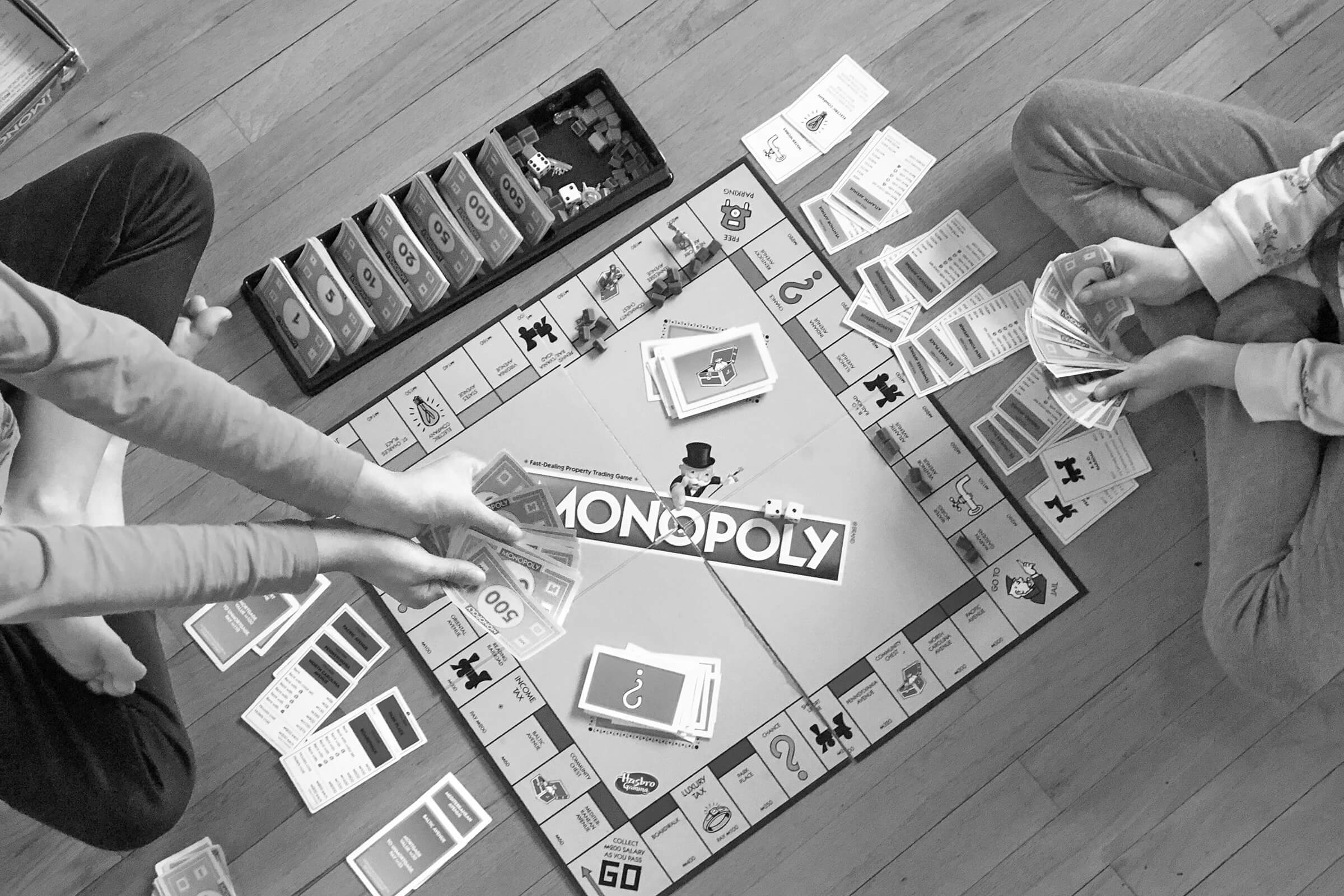

Since Monopoly first hit shelves in 1935, the game has left an indelible impact on pop culture. From the thrill of squashing the competition to the soul-crushing realization that there’s no choice but to pay hundreds of dollars in rent, we’ve all had our ups and downs while moving tokens around the Monopoly board. The game was a smash hit upon its release, and has gone on to sell over 275 million copies since its inception. But it’s not just notable for its mammoth sales numbers — Monopoly has a fascinating history that begins in 1903 with a lesser-known anti-monopolist board game that, ironically, inspired the Monopoly we all know today. Roll the dice and keep reading to learn more.
Monopoly Was Based on the Anti-Monopolist Landlord’s Game

Though Charles Darrow is considered the inventor of Monopoly — he was the one who sold the concept to Parker Brothers in 1935 — he was heavily influenced by another game that preceded his version by several decades. Monopoly was inspired by a predecessor called The Landlord’s Game, which was designed in 1903 by a progressive thinker named Elizabeth Magie. Magie herself had been influenced by the anti-monopolistic teachings of economist Henry George, and worked tirelessly to create a board game based on George’s beliefs. The result was The Landlord’s Game, which she released to critique the actions of business titans such as John D. Rockefeller and Andrew Carnegie. Magie’s game included two sets of rules: an anti-monopolist set that rewarded players for actions that benefited the common good and made sure wealth was shared, and a monopolist rulebook that’s more similar to the modern game of Monopoly (and thus focused on creating monopolies). Magie hoped this dual approach would convince players that the former set of rules was better — but, in practice, the opposite set of rules proved to be more popular.
Magie was both a progressive economic mind and a pioneering inventor — at the time she applied for a patent for The Landlord’s Game in 1903, less than 1% of patent applicants were women. There are clear similarities between her version and modern Monopoly: The original board not only featured a path that allowed players to repeatedly circle the perimeter, but also familiar spaces such as the corner jail spot. Over time, word of The Landlord’s Game spread, with players across the country adapting Magie’s concept into their own homemade versions. It was one of those versions — which was played using the pro-monopoly set of rules — that was later shown to Charles Darrow, who ran with the concept and in turn shunned the game’s intended anti-monopolistic message.
Properties Are Named After Locations in Atlantic City, New Jersey

When Monopoly (as it was by then called) was being adapted into multiple homemade versions around the country in the early 20th century — often cheaper and easier than finding an existing version for sale — it was frequently tweaked to add regional variations. One of these regional versions would later serve as the basis for the version of Monopoly sold nationwide today: the one based on locations in Atlantic City, New Jersey.
This decision can be traced back to a woman named Ruth Hoskins. Hoskins was taught a version of Magie’s Landlord’s Game while living in Indianapolis around the 1920s, though she later moved to Atlantic City and developed a version with her friends that was based on her new hometown. One of those friends, Charles Todd, would present the Atlantic City-themed version to his friend, the aforementioned Charles Darrow. As for the placement of each location on the game board, those decisions were far from random, as they were directly tied to Atlantic City’s actual property values at the time.
Monopoly Was Used as an Escape Tool by British POWs in WWII

In 1936, the English printing firm Waddingtons produced the very first licensed version of Monopoly — a London-themed edition. Waddingtons had initially been in touch with Parker Brothers regarding the potential publication of an unrelated card game called Lexicon, though they shifted focus after being sent a copy of Monopoly for testing. The game was received so positively by Norman Watson, the son of Waddingtons’ managing director, that the company struck a deal with Parker Brothers and began producing the game overseas.
A few years later, Waddingtons struck an even more consequential deal, this time with the British government. In 1940, the U.K.-based manufacturer was contracted by the British secret intelligence service to create a version of Monopoly that could be utilized by British prisoners of war. As production ramped up, the games were distributed to Nazi-run POW camps as part of larger aid packages, though each copy was actually a sneakily altered version. These devilishly disguised Monopoly boards contained metal tools to aid in escape efforts, hidden maps provided by the intelligence agency, and real money from Axis nations that could be used to bribe guards.
68% of Monopoly Players Have Never Read the Rules

According to surveys conducted by Hasbro — the company that acquired Parker Brothers in 1991 — 68% of Monopoly players have never read the game’s official rulebook, and 49% are known to just make up their own rules.
In case you’re part of that 68%, here are a few oft-overlooked official rules that you can use to your advantage the next time you play the game. First, if a player declines to buy a property, that property must be put up for auction on the spot, with any player — even the one who declined it — able to make the purchase. And while going to jail may be a nuisance, you can actually still collect rent and buy houses while being locked up behind bars, so don’t let anyone tell you otherwise. Also, the official rules stipulate that players must request rent, and if they don’t notice you haven’t paid before the next dice is rolled, then you’re in the clear.
Chocolate and Jewel-Encrusted Monopoly Boards Have Been Produced

Forget about simple cardboard and plastic — some truly special Monopoly boards have been produced over the years. In 1978, American retailer Neiman Marcus offered up a 100% chocolate version of Monopoly in their holiday catalog, opening the ad with the clever marketing line, “PASS GO, and you’ll collect 200 calories.” This indulgent replica featured edible versions of the board, the dice, and the money, all made of various kinds of chocolate and sweets. The product cost $600 in 1978 money (around $2,500 in today’s money), and also came with an inedible version of the game that would last long after the chocolate one had been consumed.
No Monopoly board has ever been deemed more valuable, however, than one produced by San Francisco-based jeweler Sidney Mobell. Valued at an estimated $2 million as of 2010, Mobell’s version of Monopoly contained a Scottie dog, thimble, and top hat all made of 18-karat solid gold, a 23-karat gold-plated playing board, money printed on gold paper, and a pair of dice bespeckled with 42 diamond studs to represent the pips. Mobell began work on the board in 1988, and it has been displayed in countless museums.
Monopoly’s Game Tokens Were Inspired by Charm Bracelets

Upon pitching Monopoly to Parker Brothers, Darrow suggested using household items such as buttons as game tokens. (Many who played the game before Darrow also used small items from around the house.) Darrow changed his tune, however, when he realized that his nieces were fond of playing the game using baubles from their charm bracelets, as well as prizes found in boxes of Cracker Jack. Darrow returned to Parker Brothers with the charm bracelet-inspired idea, which was received quite fondly. Parker Brothers agreed to use four of the metal charms produced by a charm bracelet manufacturer (reportedly the same one that made his nieces’ bracelets), and to incorporate a few new designs on top of that. Those initial tokens included a cannon, thimble, top hat, iron, battleship, and boot.
McDonald’s Monopoly Game Was Rigged by Its Head of Security

For many years, beginning in 1987, McDonald’s and Monopoly combined for a wildly successful marketing campaign in which customers would peel Monopoly stickers off their McDonald’s food items in hopes of winning a prize. However, the game was tarnished by a former police officer, Jerome P. Jacobson, who had been hired as head of security to oversee the game’s legitimacy but got involved with the U.S. mafia. Jacobson would secretly funnel winning stickers to friends, family, and others, to the tune of $24 million in winnings prior to being caught during an FBI sting. Jacobson once used his illicit actions for good, however, anonymously donating a $1 million-winning McDonald’s Monopoly sticker to St. Jude Children’s Research Hospital in 1995.
The Guinness World Record for Most Monopoly Boards Owned Is 2,249

The record for the largest personal collection of Monopoly boards is held by a man in the United Kingdom by the name of Neil Scallan, who was verified to have 2,249 Monopoly boards as of September 5, 2018. As of November 2021, however, Neil claims to have a total of 4,613 Monopoly boards, which includes 3,350 unique boards in his collection, 500 duplicates, and 763 that have been donated to the Monopoly museum in Belgium. Scallan began his hobby after purchasing a local souvenir version in New Zealand in 2005, and sometimes purchases a new board every single day. Oddly enough, Scallan doesn’t even like playing Monopoly anymore, because he prefers to keep the sets sealed in pristine condition.
